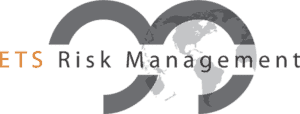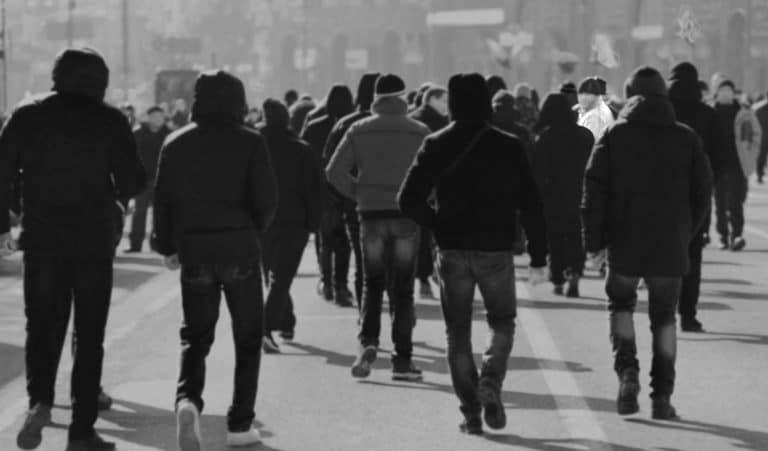Asking Questions
What as security professionals could we have done to protect a client in similar situations? If faced with a similar situation in the future would we be able to identify the threat early enough to react? Is it just a case of accepting that it is a situation of ‘wrong place, wrong time’ and would, therefore, be out of our control?
There are no guarantees within the security industry, let alone dealing with extremism. It is the author’s strong belief that behavioral and appearance analysis might make a difference in such situations. Detailed and focused observations of suspect individuals and their behaviors may lead to identifying life-threatening situations early enough to provide that all important, time to react.
Suicide Terrorism
A suicide terrorist may experience strong emotions prior to carrying out an attack, which in turn can be manifested through body language and physiological responses. Certain behaviors and tell-tale actions may be exhibited and these emotions, behaviors, and actions could be used to help identify potential suicide terrorists.
Security organizations throughout the world use behavioral analysis and screening at checkpoints, airports, and rail stations to help identify threats. Individual systems differ in methodology, but all aim to observe behavior and appearance to help their employees identify potential threats.
Fear factor
High levels of stress or fear are sudden, intense and normally of short duration. The effects of this can be positive and negative, producing an immediate physical reaction and performance-enhancing benefit but also a negative reaction with typical problems including tunnel vision, failure to prioritize, freezing and loss of concentration.
In high stress/high anxiety situations the biochemical changes that occur can have a significant negative impact on an individuals ability to assess their environment and make effective decisions. Experiments have shown that when stress and anxiety are increased there is a marked decrease in both the speed and accuracy in problem-solving tasks.
Controlling emotions
Training has been proven to play a pivotal role in managing stressful situations, SLA Marshall wrote in his book: Men Against Fire, that only 15 – 20 % of soldiers in WWII combat situations fired their weapons at the enemy. Military training in the aftermath thus focused considerably on improving this. They rehearsed and trained, simulating combat situations and focused on this to a greater extent. In The Korean War firing rates had risen to 50% and in Vietnam, it had climbed to 90%. His research, though questionable based part of this on poor management of fear and stress due to lack of correct training.
The stress and anxiety in such situations certainly contributed to these figures, most likely causing soldiers to freeze, not think properly and become confused. In the American Civil War after the Battle of Gettysburg according to research, some 90% of the muskets recovered from the battlefield were found to be loaded, further inspection found that nearly 50% were loaded more than twice and even up to ten times and not fired.
Fail to prepare…
Why is this important? Because if terrorists have not had a high level of training there is a good chance they could be affected by acute stress in a negative way. Therefore thought processes and problem-solving abilities may be affected, behavioral signs may become more obvious. The general consensus is with more experience and better training people cope with stress and anxiety better, but quality training is usually quite limited in terrorist organizations and therefore they will be more vulnerable to the negative effects of acute stress.
A recent example of stress affecting an Islamic suicide terrorist is that of the UK 7/7 bomber, Hussain in London, U.K. They were seen laughing and joking prior to the split but on his own when his rucksack failed to detonate on the underground train, it was then he went to ground level, wandered around for nearly an hour, got a new battery for detonation and for some reason decided to board a bus.
An eye witness saw Hussain board the number 91 bus at King’s Cross and noticed his bad manners in blocking fellow passengers with his rucksack. She was giving evidence at the inquest into the bus bomb at Tavistock Square. Mrs. Dybek-Echtermeyer said she noticed Hussain as he stood at the front of the bus after boarding. “He looked very exhausted and he had sweat going onto his chin that looked very horrible,” she said. “He had dry white lips, he looked nervous and exhausted”. The 18-year-old angered those around him as he travelled on a No91 bus along London’s Euston Road. Another eye witness told the hearing “A woman in her 20s tapped him on the shoulder and politely asked him to be careful because he was hitting an elderly woman and perhaps others.” The witness added: “He simply did not react. I thought he was a lost and anxious tourist. He was behaving very oddly. This evidence suggests that Hussain was reacting adversely to stress and anxiety.
Richard Reid the ‘shoe bomber’ was actually refused entry onto a flight due to his appearance and abnormal behavior. He managed to get on another flight the next day. The ‘underwear bomber’ Abdul Multullab by all accounts showed high levels of stress and anxiety at airport checkpoints yet no one challenged him.
Identifying factors
What are the identifying factors of stress?
- Exaggerated yawning
- Whistling
- Facial flushing
- Repetitive touching of the face
- Rubbing or wringing of the hands
- Widely open staring eyes
- Excessive fidgeting
- Clock watching
- Shuffling feet
- Leg shaking
What are the identifying factors of fear?
- Trembling/shaking
- Excessive sweating inconsistent with the environment
- Rigid posture, arms close together
- Exaggerated, repetitive grooming gestures
- Exaggerated emotions or behaviors inappropriate to the location such as laughter or chatter
- Hesitation/indecision
- Scanning
- Tunnel vision
There are other factors that may also be taken into account, acts that are undertaken as part of a deception. Suicide terrorists may use methods to conceal their intent.
What are the identifying factors of deception?
- Maintaining covert ties with others (keeping eye contact with others, hand gestures etc.)
- Appears to be confused or disoriented
- Does not respond to authoritative commands
Observations
Detailed and in-depth observations of suspect individuals and their behaviors could be of real benefit to the security professional. The majority of well-trained people reading this article will no doubt do some or most of these consciously and sub-consciously already. There are never definitive answers in situations like these and the world of the suicide terrorist is far from clear and concise. It is doubtful that a suicide terrorist will manifest all of these characteristics at once if at all and any factors that are noted must be put into context. For example, a person sweating, with repetitive grooming gestures and scanning the room nervously may just be looking for his first blind date.
Other indicators could also be taken into account.
- Powerful grip of a bag or hand inside a bag
- Emotionless face
- Hands in pockets or closed hands for prolonged periods of time
- Rigid midsection
- Inappropriate clothing or luggage/rucksack
- Walking or pacing with deliberation
- Repeatedly patting upper body
- Talking to oneself/mumbling or in a trance-like state
- Not responding to authoritative commands
What-if scenario
A protection detail could have been dining in Bali, Indonesia in 2005 protecting a client, would they have spotted the behavioral factors? Would the suicide terrorists have even been showing any external factors? Would the protection detail have had time to react even if they had spotted the threat early? These are all hypothetical questions that we will never know the answer to.
What we do know however is, that it is vital to see and not just look, attention to detail, powers of observation and preempting danger are vital in our roles as protectors. If suicide bomber indicative behaviors are noted early then further interest can be paid to the potential threat, preemptive measures can be taken. It is by no means an exact science but security professionals must constantly add skills to their protective arsenal, using everything in their means to offer the best level of protection to the client.







